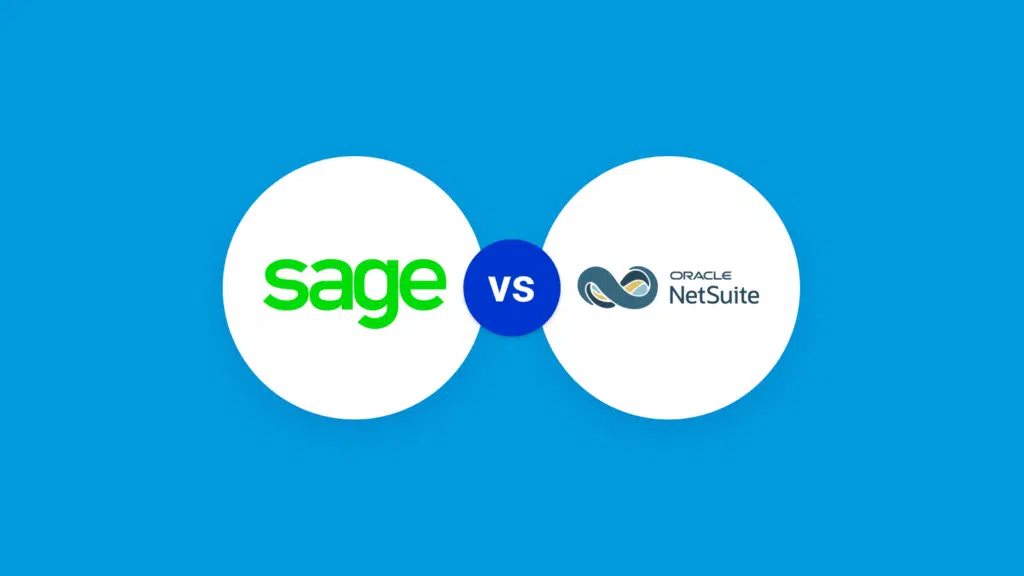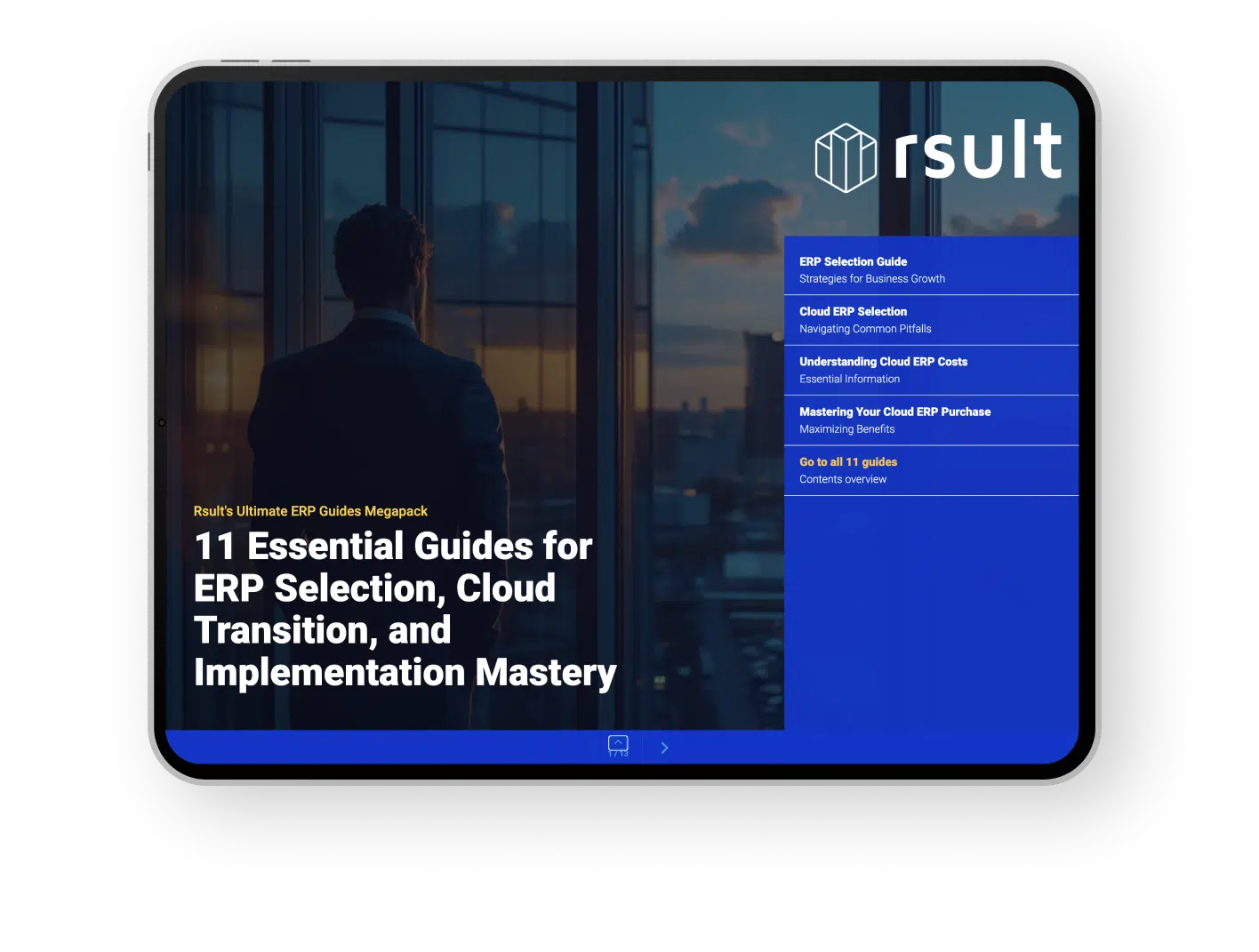When exploring the best ERP solutions to meet business needs, the debate often centers around which software will provide the greatest value and functionality. In this personalized examination, we delve into the attributes and differences between two leading cloud-based ERP systems: Sage and NetSuite. Each offers a wealth of capabilities designed to streamline operations, but they bring their own unique flavors to the table. Whether you are looking to move beyond basic accounting tools or expand your business on a global scale, understanding the nuances of Sage vs NetSuite is crucial for making an informed decision.
Key Takeaways
- Cloud-based platforms are at the forefront, offering scalability for businesses of all sizes.
- Choosing between Sage and NetSuite requires a close look at each solution’s core features and how they align with specific business processes.
- NetSuite shines in international business support, while Sage offers profound accounting and finance tools.
- Evaluating total cost of ownership is essential as expense goes beyond initial pricing.
- Industry-specific capabilities may be the deciding factor for businesses serving niche markets.
- Customization and user experience play a significant role when comparing ERP systems.
- Cloud deployment facilitates remote access and efficient scaling necessary for growing operations.
Understanding ERP Systems and Their Importance
At the heart of modern enterprise, ERP software stands as a cornerstone technology driving efficiency and innovation. ERP, or Enterprise Resource Planning, has become the lifeblood for transformative businesses seeking to streamline their processes and increase their competitive edge. The rise of cloud computing has further propelled these systems to front-and-center positions within the IT strategies of startups and established companies alike.
What Is ERP and How Does It Transform Businesses?
ERP systems serve as integrated platforms that combine all facets of a business’s operations into one cohesive suite. By centralizing data and automating core operations, businesses can remove data silos and enhance collaborative workflows. Financials, inventory management, procurement, sales, and customer service are all interwoven to operate seamlessly in service of a company’s mission. This automation leads to more informed decision-making, thanks to sophisticated business reporting accessible through a unified database.
The Shift to Cloud ERP Systems for Core Business Processes
Cloud ERP systems have ushered in a new era of operational agility and flexibility, catering to the dynamic needs of growing enterprises. With cloud technology, businesses benefit from real-time data access, core operations automation, and seamless software upgrades. This evolution not only supports more reliable and scalable business operations but also paves the way for new possibilities in HR management, ecommerce, and professional services automation – all from a single, cloud-based platform.
- Increased operational efficiency through automation of core processes
- Enhanced collaboration with cross-departmental workflows
- Greater scalability and flexibility as business needs evolve
- Real-time data access for improved decision-making and reporting
As businesses continue to navigate an ever-changing commercial landscape, the invaluable contributions of ERP systems have become more recognizable, catalyzing the transformation from traditional operations to digital powerhouses.
NetSuite and Sage Intacct: A Cloud-based ERP Frontier
In the realm of business software solutions, cloud-based ERP systems have become game-changers. At the epicenter of this landscape stand NetSuite and Sage Intacct, both exemplifying the cutting-edge in cloud-based operational management. Let’s delve into the architectures and benefits that these platforms offer to modern businesses.
SaaS Deployment Models and Multitenant Cloud Suites
Central to the effectiveness of NetSuite and Sage Intacct is their adoption of the SaaS deployment model. This software delivery method not only frees companies from the cumbersome tasks associated with traditional software maintenance but also provides a highly accessible cloud environment. The multitenant architectures underlying these suites mean that all users benefit from a communal development effort. Each tenant, or customer, shares access to a single version of the application, with their data neatly separated and secured.
Automatic Upgrades and the Single Database Advantage
Another cornerstone of the NetSuite and Sage Intacct principle of operation is automatic software upgrades. These upgrades are inherent to their offering, ensuring that all functionalities are up-to-date, without putting the onus of initiation on the customer. This translates to a more efficient use of IT resources and a consistent and advanced user experience across the board. With their single database infrastructure, these cloud-based ERP leaders provide seamless integration, robust security measures, and reliable analytics which are absolutely essential in today’s quickly evolving business environment.
| Feature | NetSuite | Sage Intacct |
|---|---|---|
| Deployment Model | Cloud-Based SaaS | Cloud-Based SaaS |
| Architecture | Multitenant Cloud Suite | Multitenant Cloud Suite |
| Upgrades | Automatic | Automatic |
| Database Structure | Single Database | Single Database |
| Data Segregation | Private Data Instances | Private Data Instances |
| Analytics and Reporting | Real-Time Access | Real-Time Access |
Core Functionalities: Comparing Sage Intacct and NetSuite
NetSuite and Sage Intacct offer distinct platforms that meet varied business needs—but how do their core functionalities stack up against each other? Understanding the strengths and intended user bases of these two leading ERP solutions is key for businesses looking to optimize their software infrastructure.
Comprehensive Business Management with NetSuite
At the heart of NetSuite’s capabilities is its all-encompassing approach to enterprise resource management. NetSuite is equipped with a wide array of modules that address nearly every aspect of business operations. This diverse toolkit not only includes a powerful Customer Relationship Management (CRM) system but also features robust modules for manufacturing, ecommerce, and Human Capital Management (HCM). This suite of tools makes NetSuite an exceptionally versatile choice for those requiring a comprehensive business management solution.
Accounting and Finance Focus of Sage Intacct
Contrasting NetSuite’s broad functionality, Sage Intacct focuses its radar specifically on accounting and finance. For businesses whose primary concern lies in meticulous and effective financial management, Sage Intacct delivers core accounting features with advanced functionalities. This specialization, however, comes at the cost of more limited in-house capabilities in CRM, reporting, and financial consolidations, although Sage Intacct attempts to bridge these gaps with additional integrations and add-ons.
- Sage Intacct excels in providing detailed accounting reports, yet lags in the CRM domain when compared to the native features of NetSuite’s CRM module.
- For businesses needing extensive financial consolidations across various currencies or international transactions, NetSuite shows a clear advantage in offering integrated solutions that bypass the need for external applications.
International Business Support: NetSuite’s Global Edge
As businesses expand across borders, the need for robust international business support becomes crucial. Oracle’s NetSuite stands out with extensive capabilities to ease the complexities of conducting global operations. Offering comprehensive tools for currency conversion and multilingual capabilities, NetSuite is engineered to empower enterprises to thrive in a dynamic international marketplace.
Let’s look at a comparative review highlighting how NetSuite’s international functionalities serve the needs of globally expanding enterprises:
- Currency Conversion: NetSuite provides live exchange rates and powerful currency management, allowing businesses to automatically convert and report on any world currency.
- Multilingual Support: With multilingual capabilities, NetSuite ensures that employees and customers from diverse language backgrounds can navigate the system with ease.
- Global CRM: Manage worldwide sales and services operations within a single system, ensuring consistency and visibility across all regions.
- Multi-subsidiary Management: NetSuite simplifies inter-company transactions and reporting, providing a clear picture of finances across multiple subsidiaries.
Below is a practical display of NetSuite’s global features that strategically support international and multisubsidiary entities:
| Feature | Description | Benefit |
|---|---|---|
| OneWorld Suite | A suite designed to handle global business operations, taxes, and compliance requirements. | Enables efficient management of multiple subsidiaries, business units, and legal entities. |
| In-Built Tax Engine | Dynamic tax calculation for over 100 countries to streamline taxation across borders. | Reduces the risk of compliance errors and streamlines the complex tax landscape. |
| Global Ecommerce | Unified platform for online business activities across the globe, accepting multiple currencies and languages. | Provides a seamless shopping experience for customers worldwide. |
| Audit and Compliance Reporting | Built to support global audit standards with robust reporting capabilities. | Ensures consistent compliance with various international financial reporting standards. |
In the global business arena, having a system that can keep pace with ever-changing regulations, handle multiple currencies, and communicate with a diverse customer base is invaluable. NetSuite delivers tailored solutions that bolster a company’s international presence and caters to the intricate demands of managing a business without borders.
Sage vs NetSuite: Evaluating Total Cost of Ownership
When investing in ERP systems, businesses must look beyond the sticker price to the total cost of ownership (TCO), which includes both upfront and ongoing expenses. These costs encompass not just the initial purchase or subscription fees but also expenses related to implementation, customizations, and the resources needed to operate and manage the software.
The Direct and Indirect Costs of Sage Intacct
Sage Intacct may present an attractive entry-level pricing, but it is pivotal to recognize how direct costs such as subscription fees and indirect costs, including customizations and additional user licenses, can contribute to increasing the TCO. Various factors such as data migration, training, and platform services also play a significant role in tallying the overall investment.
NetSuite’s Predetermined Price and SuiteSuccess Methodology
In contrast, NetSuite adopts a transparent pricing approach with SuiteSuccess, its holistic implementation process. NetSuite’s pricing bundles subscription fees, customizations, and essentials such as financial consolidations and CRM into a comprehensive package, designed to deliver a more predictable TCO.
| Cost Component | Sage Intacct | NetSuite |
|---|---|---|
| Subscription Fees | Variable based on users and add-ons | Fixed SuiteSuccess packages |
| Customizations | Additional charges may apply | Included in SuiteSuccess offering |
| Financial Consolidations | May require extra subscription | Integrated into core package |
| CRM Capabilities | Limited native support; third-party add-ons necessary | Comprehensive native features included |
| Training and Implementation | Often outsourced at additional cost | Part of SuiteSuccess with no additional cost |
While Sage Intacct provides a solid solution for accounting and finance, NetSuite’s inclusive pricing model, accentuated by SuiteSuccess, aims to streamline the TCO, offering a cohesive ERP experience that scales with your business needs. Understanding the fine print of subscription fees and the long-term implications of customizations can reveal the true investment into your business’s digital infrastructure.
NetSuite’s Industry-Specific Offerings vs. Intacct’s Functionalities
When exploring the diverse landscape of Enterprise Resource Planning (ERP) solutions, the distinction between NetSuite’s industry-specific offerings and Intacct’s functionalities becomes particularly relevant. NetSuite, hailed for its product maturity, has developed a suite of SuiteSuccess editions that target precise business needs within a wide spectrum of industries. This level of specificity caters not only to broad sectors but also to niche markets, recognizing the nuances of various business models and their unique operational requirements.
On the other side of the spectrum, Intacct, while providing a robust set of tools for financial management, doesn’t offer the same degree of targeted solutions for industry-specific needs. Although servicing several primary industries, Intacct may not fully resonate with organizations that find themselves operating in more specialized software niches or those seeking out-of-the-box solutions tailored to their sector.
| Industry | NetSuite’s SuiteSuccess Offering | Intacct’s Core Functionality |
|---|---|---|
| Financial Services | Custom dashboards, regulatory compliance tools, and real-time financial reporting | General ledger, accounts payable/receivable, and cash management |
| Software | Revenue recognition, subscription billing, and customer lifecycle management | Project accounting, billing, and vendor management |
| Wholesale Distribution | Supply chain optimization, inventory management, and demand planning | Multi-entity consolidation and financial reporting |
| Retail | Omnichannel commerce, POS integration, and customer engagement metrics | Sales and use tax, fixed assets, and cash management |
| Health and Beauty | Built-in compliance, quality assurance, and detailed analytics | Basic asset management and financial reporting |
| Campus Stores | Inventory tracking, campus-specific merchandising, and store management | Financial management and reporting tailored to educational institutions |
| Professional Sports | Ticket sales analysis, fan engagement tracking, and event revenue management | Project accounting capabilities with a focus on financials |
NetSuite’s ability to deliver bespoke features and functionalities emphasizing industry-specific offerings speaks volumes about their approach to addressing targeted business needs. In contrast, Intacct maintains a strong position in its core functionalities, but might require additional customization to completely fulfill the demands of certain industry niches. Businesses must weigh these considerations carefully, assessing the potential impacts on their operations and scalability. NetSuite presents itself as a versatile, mature solution, while Intacct may be suitable for companies seeking a strong financial backbone without the requirement for industry-tailored capabilities.
Implementation and Customization: A Critical Divergence
When it comes to tailoring ERP solutions to specific business needs, the flexibility and capabilities of the chosen platform are paramount. The decision between using NetSuite’s comprehensive suite or Sage Intacct’s customization offerings often hinges on a company’s particular demands for integrations and adaptability.
NetSuite’s Flexible Platform and Customization Tools
NetSuite shines with its expansive array of customization tools that create a flexible platform capable of handling a multitude of business-specific requirements. With a strong emphasis on providing adaptable implementation services, businesses can seamlessly incorporate necessary integrations, ensuring that their individual operational needs are met with precision.
Sage Intacct’s Customization Services and Limitations
Sage Intacct offers a range of customization services designed to enhance its already strong financial and accounting core. However, users may encounter certain constraints due to the platform’s more focused approach. These limitations can particularly be felt in areas such as post-implementation adjustments and the need for broader reporting capabilities.
| Feature | NetSuite | Sage Intacct |
|---|---|---|
| Flexibility | Highly flexible platform with SuiteSuccess methodology | Customizable but with some inherent limitations |
| Customization Tools | Robust suite including scripting, workflows, and UI personalization | Limited to predefined reports and dashboards |
| Integrations | Extensive integration options with third-party apps | Integrations available but may require additional effort |
| Post-Implementation Adjustments | Easier adjustments possible due to platform agility | Challenging adjustments, especially for add-on applications |
| Support for Internationalization | Broad multilingual and multi-currency support | Primarily English support with limited international focus |
Considering the importance of a system that evolves with your business, the decision of which ERP provider to choose is crucial. The advantages of a flexible platform, robust customization tools, and seamless integrations play a significant role in shaping a future-proof business environment.
Comparing User Experiences: Sage vs NetSuite
The evaluation of user experience with ERP software often centers around the intuitive design of the interface and the ease of learning and navigating through the system. A system with a user-centric design philosophy promotes proficiency and satisfaction among the workforce. In this comparison between Oracle NetSuite and Sage Intacct, we will delve into several critical elements that shape the overall user experience.
User-Friendly Design and Learning Curve
Oracle NetSuite is renowned for its consistent interface across its suite, enabling users to navigate its comprehensive featureset with relative ease. The suite’s intuitive design allows for seamless transitions between applications, creating a cohesive user experience. However, for smaller businesses or those with singular needs, the plethora of options might initially be overwhelming.
In contrast, Sage Intacct specializes in delivering a focused range of accounting functionalities, which can substantially shorten the learning curve for new users. This tailored approach has earned accolades for enabling users to manage financial operations with greater confidence and less training.
Customer Support and Training Resources
When it comes to customer support, NetSuite takes pride in its 24/7 availability, offering peace of mind for businesses that operate beyond conventional hours. This around-the-clock assistance is a testament to Oracle’s emphasis on comprehensive customer care.
Sage Intacct, while providing robust training resources, operates primarily during regular business hours, which may limit realtime support for users across different time zones. Nevertheless, they maintain a library of training materials designed to accelerate proficiency among its users.
Both ERP solutions recognize the importance of support and education, though their availability and offering differ, shaping a distinct user experience ecosystem within each platform.
Deployment and Access: The Cloud Advantage
Cloud deployment has incontrovertibly transformed the landscape of enterprise resource planning (ERP). Oracle NetSuite and Sage Intacct are emblematic of this shift, offering businesses powerful capabilities to streamline operations. Unlike traditional on-premises solutions, these cloud-based ERP systems promise a host of compelling benefits centered around data security, robust remote access, simplified information sharing, and adaptability to varying business volumes—essentials for the contemporary business scene.
In the domain of data security, cloud ERP systems shine by employing state-of-the-art encryption and continual data backup practices. This ensures that critical corporate information remains secure from unauthorized access, while simultaneously available for legitimate use across the globe. With strong security protocols, businesses can rest assured that their sensitive data is guarded against evolving cyber threats.
Remote access is yet another cornerstone of the cloud deployment model, permitting seamless connectivity for distributed teams or individuals working off-site. This flexibility is not only crucial for maintaining productivity in today’s increasingly mobile and remote work environments but also integral for any entity seeking expansive geographical reach.
- Continuous Accessibility: Cloud solutions provide consistent, 24/7 access to the ERP system from any internet-enabled device.
- Collaboration Efficiency: Teams can coalesce around shared data sets, ensuring that clear, real-time information sharing forms the base of collaborative efforts.
- Global Operations: With features catering to multiple languages and currencies, platforms like Oracle NetSuite facilitate the management of international transactions with agility.
- Scalability: Adaptive to business growth, cloud ERP systems circumvent the restrictions associated with traditional software, scaling alongside the business without the need for significant infrastructure investments.
The convergence of cloud deployment with critical operations like data security, remote access, and information sharing fosters an environment where business processes are not only safeguarded and accessible but also poised for future growth. Oracle NetSuite and Sage Intacct exemplify this synergy, positioning businesses to thrive in the digital age.
Conclusion
When it comes to ERP selection, the pivotal factor lies in understanding the unique requirements of your business and how they align with the features provided by either Sage or NetSuite. It involves an exercise of informed decision-making, weighing the pros and cons of each ERP solution against the backdrop of your company’s needs for business scalability and strategic investment. NetSuite emerges as a robust option for enterprises looking to expand globally, offering an extensive suite of features that cater to sophisticated, multi-subsidiary operations.
Sage vs NetSuite: Choosing the Right ERP for Your Business
On the other hand, Sage Intacct may be the perfect fit for companies concentrating on advancing their finance and accounting precision, especially if their operation isn’t significantly global in scope. It’s not a simple choice of one over the other, but a thoughtful deliberation of what each solution brings to the table, considering the entire ecosystem in which your business operates.
Summarizing Key Points and Making an Informed Decision
In conclusion, the question isn’t which ERP is best, but which is best for your business. As you stand at this crossroads, remember to factor in considerations such as the total cost of ownership, the ability of the system to customize to your needs, the industry-specific solutions it offers, and the kind of user experience it delivers. Both Sage and NetSuite offer pathways to enhance your operational efficiencies. Ultimately, selecting the right ERP means choosing a strategic partner that aligns with the tactical and strategic objectives of your enterprise to bolster growth and ensure competitive advantage.
FAQ
What Is ERP and How Does It Transform Businesses?
ERP, or Enterprise Resource Planning, is a suite of integrated applications that manage core business processes such as finance, HR, services, procurement, and supply chain. It automates business operations, facilitates information flow between all business functions, and manages connections to outside stakeholders, thereby transforming businesses by streamlining processes, enhancing efficiency, and providing a unified view of the business.
Why are businesses shifting to Cloud ERP Systems?
Businesses are shifting to Cloud ERP systems because they offer real-time access to data, seamless upgrades, and the ability to support various business functions from one platform. The cloud-based model allows for enhanced scalability, reliability, and flexibility, overcoming the limitations of on-premises infrastructure and enabling efficient business growth.
What are SaaS Deployment Models and Multitenant Cloud Suites?
SaaS, or Software as a Service, deployment models allow cloud-based ERP software to be accessed via the internet on a subscription basis. Multitenant cloud suites mean that multiple customers share common infrastructure and code base while keeping their data separate. This ensures maintenance and upgrades are managed by the vendor, providing cost-efficiency and ease of use.
What are the advantages of automatic software upgrades and a single database?
Automatic software upgrades ensure that all users are on the latest version with the most up-to-date features and security patches. A single database structure allows for a centralized data repository, streamlined updates, enhanced security, and improved analytics and reporting across the organization.
How do the core functionalities of Sage Intacct and NetSuite differ?
NetSuite offers a broad range of business management tools across various modules, including CRM, HCM, ecommerce, and more, suitable for comprehensive business management. Sage Intacct, on the other hand, is more focused on accounting and finance functionalities and may require additional add-ons for extended features, potentially limiting its depth in certain areas compared to NetSuite.
What international business support features does NetSuite provide?
NetSuite supports international business operations with features like multi-currency conversion, multilingual support, and tools for multinational and multisubsidiary management. Its global reach and partner ecosystem make it especially beneficial for companies that require robust international business functionalities.
How does the cost of ownership compare between Sage Intacct and NetSuite?
Sage Intacct may initially appear less expensive, but costs could rise due to add-on services and customizations. NetSuite’s SuiteSuccess methodology offers a predetermined price, integrating major functionalities in its core offering which can be more cost-effective in the long term, particularly for businesses looking to scale and expand.
What industry-specific offerings does NetSuite provide compared to Sage Intacct?
NetSuite provides industry-specific solutions tailored to various sectors, including both broad industries and “microverticals.” These targeted editions come with specialized features and configurations. Sage Intacct, while servicing primary industries, may not have the same level of specialized solutions for niche markets.
What are the differences in implementation and customization between NetSuite and Sage Intacct?
NetSuite’s platform is designed to be highly customizable with a range of tools and integrations available, supported by the SuiteSuccess methodology. Sage Intacct also offers customization but can face limitations in reporting and integration with other software, especially for non-English-speaking users.
Can you compare the user experiences of Sage Intacct and NetSuite?
NetSuite offers a suite of consistent applications which may include extra features that not all businesses need, potentially complicating the user experience. Sage Intacct is known for its focused approach to accounting and simple user interface, making it easier for users to learn the system despite niched limitations.
How does cloud deployment benefit business operations for ERP systems?
Cloud deployment in ERP systems offers benefits such as secure, real-time data access from anywhere, facilitating collaboration, business continuity with automatic data backups, encrypted data security, and the ability to quickly scale resources as the business grows.
How do I choose between Sage Intacct and NetSuite for my business?
The decision between Sage Intacct and NetSuite should be based on your business’s specific needs. If you require a comprehensive suite that supports wide-ranging business operations and international scalability, NetSuite may be more suitable. If your focus is on advanced accounting and finance capabilities with less necessity for extended global features, Sage Intacct could be the best fit. Consider factors like cost, customization, industry-specific offerings, and user experience when making your choice.





